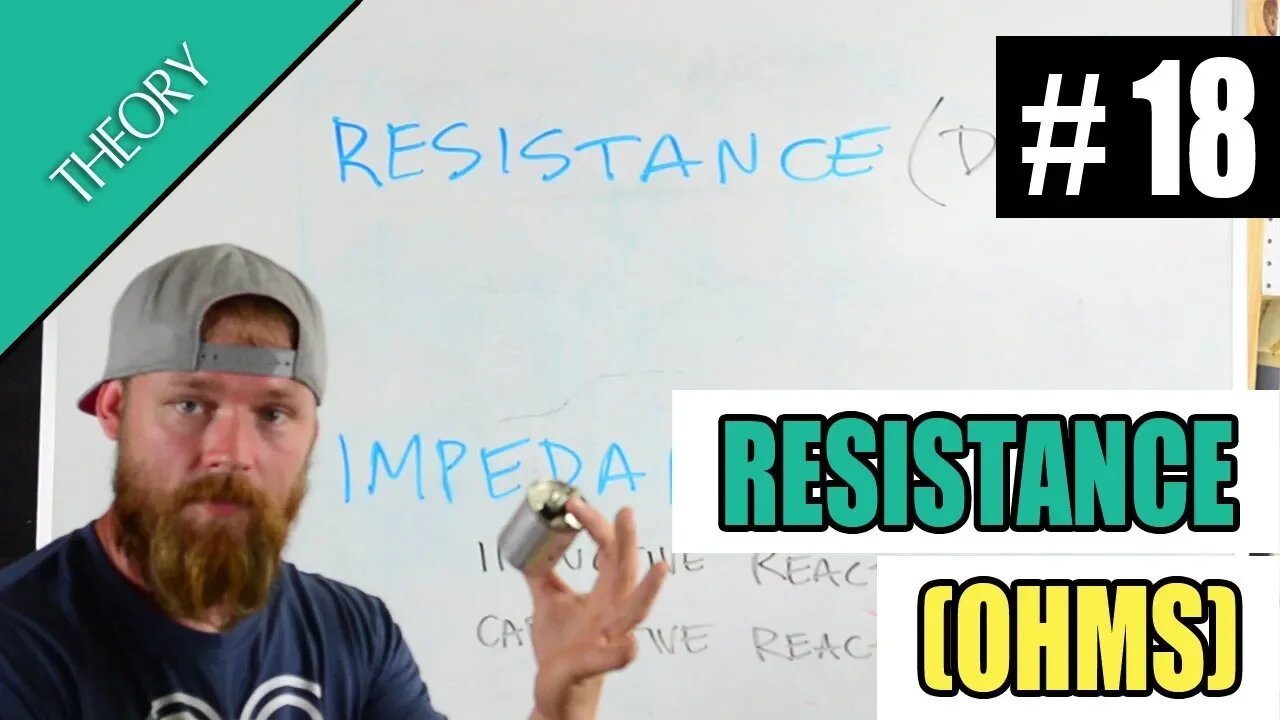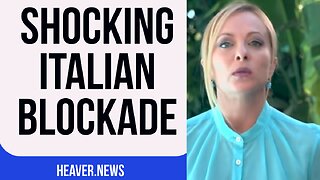Premium Only Content

What is Resistance/Impedance (Ohms) - Why electricians need to know it
Resistance is a very important element of an electrical circuit. As electricians we use the term impedance more than we use resistance, as impedance refers to AC circuits - whereas resistance refers to DC.
👾🤖PRACTICE EXAMS🤖👾
https://www.electricianu.com/practice-exams
😎👕MERCH👕😎
https://www.electricianu.com/merchandise
📲👥SOCIALS👥📲
Instagram - https://www.instagram.com/electrician_u
Discord - https://discord.gg/7ykYfbh
Facebook Page - https://www.facebook.com/theelectricianu
Facebook Group - https://bit.ly/2tz7eQh
TikTok - https://www.tiktok.com/@electricianu
Resistance and Impedance are both methods of slowing down current enough for it to be usable. When current is unimpeded (meaning no resistance in it's way) it can create an immense amount of heat, which may melt the insulation off of the wires or cause the wires to start welding themselves together. This is a very dangerous and dramatic event when it does happen.
So putting a coil of wire in the middle of the circuit slows the current down to a usable level. Most appliances on electrical circuits operate because there is a coil of wire on the inside of them. When current leaves the source and travels into the appliance, it has to travel through instructors and capacitors on its way out of the appliance and back up to the source. In an AC circuit the direction alternates this happens 60 times per second. This works the same way in a standard DC circuit, except with the DC circuit there are resistors, so we call these circuits resistive circuits.
Impedance in an AC circuit has 2 parts that make it up. Inductive reactance and capacitive reactance. I will get more into these in a later video, but for now just understand that there is a definite relationship between a capacitor and and inductor in how they affect current in an AC circuit. An inductor and a capacitor act to cancel some of the effects of each other out if they are both introduced in a circuit. However if only one is in the circuit it will act opposite than the other one would. For example if an inductor is in the circuit, you would have an inductive circuit that would make the Voltage waveform lead the Current waveform. Conversely in a capacitive circuit, the opposite would occur - you'd have a Current waveform leading a Voltage waveform. More on this later.
--
IF YOU ENJOY THESE VIDEOS PLEASE SUBSCRIBE AND "LIKE" THEM ABOVE. ALSO CHECK OUT THE ELECTRICIAN U PODCAST ON ITUNES!!
#electricianclasses #electricaltraining #electriciantraining #resistance #impedance #ohms
-
 0:57
0:57
Electrician U
1 year agoMy FAVORITE Tester for Electricians - What Hand Tools Are YOU Missing
5.75K -
 1:07:21
1:07:21
Timcast
2 hours agoTrump Declares Antifa TERRORISTS, The Ultimate Test For The U.S. And Threat Of Civil War
159K82 -
 3:45:31
3:45:31
MattMorseTV
5 hours ago $7.66 earned🔴Trump's United Nations BOMBSHELL.🔴
59.3K23 -
 LIVE
LIVE
Rebel News
1 hour agoRebels on the ground for ostrich cull, New hate crime bill, Ford on homeless crisis | Rebel Roundup
371 watching -
 4:23
4:23
Michael Heaver
9 hours agoItaly Suffers Extreme BLOCKADE
2.68K4 -
 1:59:09
1:59:09
Steven Crowder
4 hours agoWe're Done Apologizing: Trump Torches Indian H-1B Visas & The United Nations
381K324 -
 43:39
43:39
The Rubin Report
3 hours agoHost Goes Quiet as Press Sec Destroys Jimmy Kimmel Narrative w/ Facts in Under 1 Minute
41.3K28 -
 1:44:47
1:44:47
Side Scrollers Podcast
3 hours agoKimmel RETURNS + Twitch University + More! | Side Scrollers
15.1K -
 1:34:15
1:34:15
The Mel K Show
3 hours agoMORNINGS WITH MEL K Defining Liberty: Where the Constitution Stands in a Surveillance State 9-23-25
29.1K3 -
 DVR
DVR
The Shannon Joy Show
3 hours agoFree Speech, Free Markets & The Political Weaponization Of Charlie Kirk. Live With Matt Kibbe
16.8K4